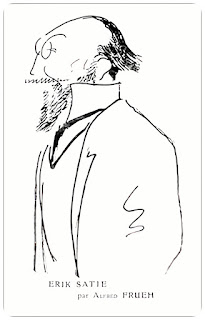The Evolution of Chapter Houses
architectural analysis
...
Tracing the development of chapter houses from early Christianity to the Gothic period.
The chapter house, a structure integral to many religious institutions, has undergone significant transformations over the centuries. From humble beginnings as simple meeting rooms to the elaborate architectural masterpieces seen today, the evolution of chapter houses reflects the changing needs, tastes, and technological advancements of their time. This article will explore the development of chapter houses, tracing their history from early Christian times through the Romanesque and Gothic periods.
Early Christian Chapter Houses
Simple Designs and Functional Purposes
In the early Christian era, chapter houses served as essential gathering spaces for clergy and monastic communities. These structures were primarily functional, designed to accommodate meetings, and simple in design. The early Christian chapter house was often a straightforward, unadorned room where members of the clergy or monastic order would convene for prayer, discussion, and decision-making.Influence of Roman Architecture
As Christianity spread throughout Europe, it came into contact with various architectural styles, most notably Roman architecture. The influence of Roman design can be seen in many early Christian chapter houses, with features such as columns, arches, and vaulted ceilings becoming more common.Examples of Early Christian Chapter Houses
Some notable examples of early Christian chapter houses can be found in Italy and England. The chapter house at the monastery of San Salvatore in Brescia, Italy, is a well-preserved example from the 8th century. In England, the chapter house at the monastery of Wearmouth-Jarrow, built in the 7th century, showcases the influence of Roman architecture on early Christian design.Romanesque Chapter Houses
The Romanesque period, which spanned from approximately the 10th to the 12th century, saw significant developments in chapter house architecture. Characterized by the use of barrel vaulting and rounded arches, Romanesque chapter houses were more elaborate and ornate than their early Christian counterparts.Characteristics: Barrel Vaulting, Rounded Arches
The use of barrel vaulting allowed for the creation of larger, more complex spaces. This technique involved the continuous, semi-circular arcing of a vault over a space, providing excellent structural support and creating a sense of solidity and permanence.Notable Examples: Speyer Cathedral, Durham Cathedral
Two of the most notable examples of Romanesque chapter houses can be found at Speyer Cathedral in Germany and Durham Cathedral in England. Speyer Cathedral's chapter house, built in the 11th century, is renowned for its impressive barrel vaulting and ornate decoration. Durham Cathedral's chapter house, constructed in the 12th century, features a striking example of Romanesque architecture, with its rounded arches and robust stone construction.Regional Variations and Influences
While Romanesque chapter houses shared certain characteristics, regional variations and influences were also evident. For example, Italian Romanesque chapter houses often incorporated elements of Byzantine architecture, such as the use of domes and intricate mosaics.Gothic Chapter Houses
The Gothic period, which emerged in the 12th century, saw a significant shift in chapter house design. Characterized by the use of ribbed vaulting and pointed arches, Gothic chapter houses were more elaborate and ornate than their Romanesque predecessors.Characteristics: Ribbed Vaulting, Pointed Arches
Ribbed vaulting, a hallmark of Gothic architecture, allowed for the creation of even larger and more complex spaces.Notable Examples: Salisbury Cathedral, Wells Cathedral
Two of the most notable examples of Gothic chapter houses can be found at Salisbury Cathedral and Wells Cathedral, both in England. Salisbury Cathedral's chapter house, built in the 13th century, is a masterpiece of Gothic design, featuring an octagonal shape and intricate stone carvings. Wells Cathedral's chapter house, constructed in the 13th century, boasts an impressive example of ribbed vaulting and ornate decoration.Innovations and Experimentation in Gothic Chapter House Design
The Gothic period saw significant innovations and experimentation in chapter house design. Builders began to push the boundaries of what was possible, creating larger, more complex, and more ornate structures....
· What the early chapterhouses teach us today
· Reciprocity
· Collaboration, competition
· Keep the Unity!



